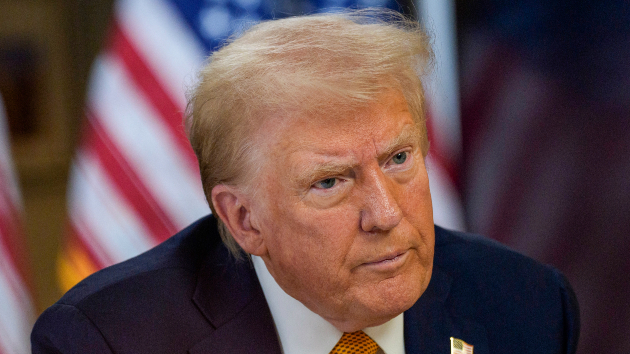
(WASHINGTON) — President Donald Trump on Friday voiced a willingness to ease tariffs on China, saying on social media it “seems right” to slash levies from 145% to 80%.
The announcement arrives a day before Treasury Secretary Scott Bessent is set to begin trade negotiations with Chinese officials at a meeting in Geneva, Switzerland.
The potential tariff reduction floated by Trump may avert a virtual standstill of trade between the world’s two largest economies, but the move would not substantially ease expected price increases for goods such as clothes, sneakers and toys, analysts told ABC News.
Product shortages would also remain a possibility at the lower tariff rate, they added.
“A tariff of 80% would still have a dramatic effect,” Christian vom Lehn, an economics professor at Brigham Young University, told ABC News. “It would mean a significant impact for consumers.”
Trump last month sharply increased tariffs on China, prompting China to retaliate with 125% tariffs on U.S. goods. The tit-for-tat measures set off a trade war with the third-largest U.S. trade partner, which accounted for nearly $440 billion worth of imports last year.
The tariffs elicited warnings from a slew of companies about the risk of price increases for U.S shoppers.
Toy giant Mattel warned in an earnings report this week of plans to shift some of its supply chain outside China, adding that when necessary it would take “pricing action in its U.S. business.” The move follows similar messages from electronics chain Best Buy as well as Chinese e-commerce retailers Shein and Temu.
Chinese shipments to the U.S. have dropped significantly, falling 21% in April compared to a year earlier, data from China’s General Administration of Customs on Friday showed.
Risks for consumers would continue to linger for two key reasons, analysts said: An 80% tariff would still amount to a punishing tax on imports, while uncertainty about the chance of another policy shift would make it difficult for companies to take full advantage of the lower rate.
Tariffs raise prices for consumers if importers fail to swallow the tax burden by eating into their profits or requesting a supplier sell the product at a lower rate in order to offset a share of the cost.
Under the current 145% tariff on Chinese goods, suppliers and importers face immense pressure as they try to bear some of the tax cost out of concern that higher prices would hurt sales, experts told ABC News. Due to the sky-high tariff, however, many sellers have little choice but to hike prices or risk losses, they added.
Those dynamics would remain in place at an 80% tariff rate, since it would still far exceed many companies’ capacity to offset the added cost with lower profits, Jason Miller, a professor of supply chain management at Michigan State University.
“An 80% tariff really doesn’t change things too much,” Miller said.
Trump’s announcement of a potential reduction of the tariff on China came two days after Trump ruled out any such lowering of the tariff level before negotiations.
The developments followed a weeks-long back and forth during which the two sides disputed whether they had already started discussing the tariffs.
The general sense of uncertainty would remain even after U.S. tariffs were to reach 80%, making it difficult for businesses to adapt their supply chains in a manner that would substantially ease costs and, in turn, offer relief for consumers, some analysts said.
“Even at a lower tariff, companies would have to be wondering whether this might go up again or or possibly come down again,” David Andolfatto, an economist at the University of Miami, told ABC News.
If companies could trust the possible 80% tariff level as a long-term policy stance, they may choose to reroute supply chains outside China or even initiate plans for some domestic production, Andolfatto said.
But each trade policy announcement put forward by Trump appears subject to change, Andolfatto said, noting several modifications already undertaken by Trump.
“If anything changes, the Trump administration can unilaterally react and come back to the negotiating table,” Andolfatto added.
For his part, Bessent has referred to the White House approach as a negotiating tactic, describing the policy changes as “strategic uncertainty.”
Testifying before a House subcommittee this week, Bessent said the Trump administration had commenced negotiations with 17 of the top 18 U.S. trade partners, excluding China. Those countries account for the vast majority of U.S. foreign trade, Bessent said.
Trump unveiled the framework for a trade agreement with the United Kingdom on Thursday, marking the first such accord with any nation since the White House suspended some of its far-reaching “Liberation Day” tariffs last month.
“Every country wants to be making deals,” Trump said in the Oval Office on Thursday, noting the upcoming talks between Bessent and Chinese officials.
“That will be very interesting,” Trump said.
Copyright © 2025, ABC Audio. All rights reserved.
